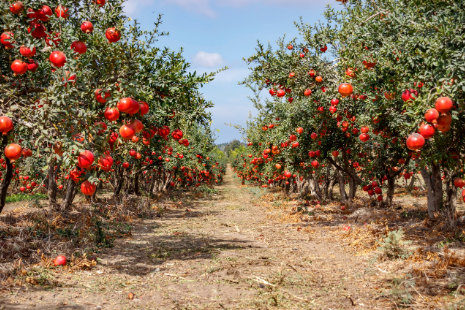Starting your own orchard can be a rewarding endeavor, offering fresh, homegrown fruits and a deeper connection to nature. Whether you’re aiming for a few backyard trees or planning a larger-scale orchard, understanding the basics of fruit tree cultivation is essential. This guide provides practical tips for beginners looking to embark on their fruit-growing journey.
1. Selecting the Right Fruit Trees
Choosing the appropriate fruit trees is the first step in establishing a successful orchard. Consider factors such as your local climate, soil type, and available space. For beginners, it’s advisable to start with hardy and low-maintenance varieties. Some popular choices include:
- Apple Trees: Versatile and widely adaptable, apple trees thrive in various climates and soil types.
- Peach Trees: Known for their delicious fruits, peach trees require a sunny location and well-drained soil.
- Pear Trees: Hardy and disease-resistant, pear trees are suitable for beginners and yield high-quality fruits.
- Plum Trees: With minimal care, plum trees produce sweet fruits and are relatively easy to grow.
Research local nurseries or online platforms to find reputable sources for purchasing these trees.
2. Understanding Your Growing Zone
Your USDA Hardiness Zone determines which fruit trees will thrive in your area. It’s crucial to select trees that are suited to your zone to ensure successful growth and fruit production. For instance, certain apple varieties may perform better in colder zones, while citrus trees are better suited for warmer climates.
3. Preparing Your Planting Site
The location of your orchard plays a significant role in the health and productivity of your fruit trees. Choose a site that receives ample sunlight, preferably 6-8 hours daily. Ensure the soil is well-draining to prevent root rot and other issues. If your soil is heavy clay, consider amending it with organic matter or using raised beds to improve drainage.
4. Planting Your Trees
Planting is a critical step that can influence the future success of your orchard. Follow these guidelines:
- Digging the Hole: The hole should be twice as wide and the same depth as the root ball.
- Positioning the Tree: Place the tree in the hole so that the root flare is level with the surrounding soil.
- Backfilling: Fill the hole with native soil, gently firming it around the roots to eliminate air pockets.
- Watering: Water the tree thoroughly after planting to settle the soil and hydrate the roots.
5. Watering and Fertilizing
Consistent watering is essential, especially during the first few years as the trees establish themselves. Deep watering encourages deep root growth. Fertilize your trees annually with a balanced fertilizer to promote healthy growth and fruit production. Be cautious not to over-fertilize, as this can lead to excessive foliage growth at the expense of fruiting.
6. Pruning and Maintenance
Regular pruning helps maintain the shape of the tree, removes dead or diseased wood, and improves air circulation. For most fruit trees, pruning is best done during the dormant season. Additionally, monitor your trees for pests and diseases, and take appropriate action if necessary.
7. Harvesting Your Fruits
Patience is key when it comes to harvesting. Each fruit tree has its own timeline for fruiting. For example, apple trees may take 3-5 years to bear fruit, while peaches might take 2-4 years. Harvest fruits when they are fully ripe for the best flavor and quality.
8. Considering Specialty Trees
For those interested in diversifying their orchard, specialty fruit trees can be an exciting addition. One such option is the pomegranate tree for sale. Pomegranates are not only beautiful but also produce nutrient-rich fruits. When purchasing a pomegranate tree, ensure it’s suitable for your climate and growing conditions.
Conclusion
Embarking on the journey of growing fruit trees can be both enjoyable and fruitful. By selecting the right varieties, preparing your planting site, and providing consistent care, you can establish a thriving orchard that yields delicious fruits for years to come. Remember to research and choose trees that are well-suited to your local conditions and enjoy the process of nurturing your own piece of nature.





